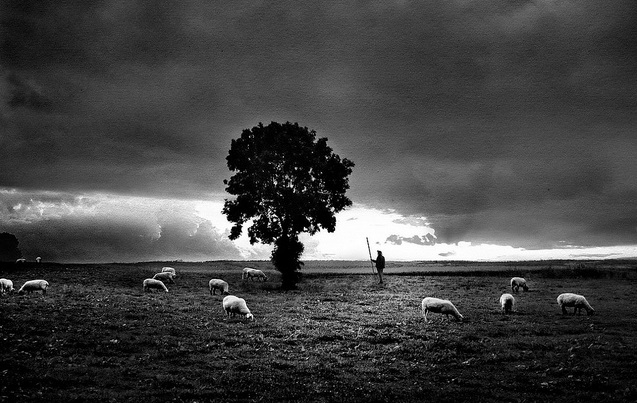 Tomorrow ASPI will release Gen Y jihadists: preventing radicalisation in Australia, our latest STRATEGY paper. This publication is the result of a major study by a team of contributors into the threat and nature of Islamist inspired terrorism in Australia and provides a series of policy recommendations based on its findings.
Tomorrow ASPI will release Gen Y jihadists: preventing radicalisation in Australia, our latest STRATEGY paper. This publication is the result of a major study by a team of contributors into the threat and nature of Islamist inspired terrorism in Australia and provides a series of policy recommendations based on its findings.
Gen Y jihadists follows reports that more than 100 Australians have left to fight for Islamic militant groups in Syria and Iraq and that the number of high-risk terrorism threats being monitored by Australian authorities had more than doubled. The paper includes a database of individuals identified from media reporting that are alleged to have left Australia to fight for groups like Islamic State of Iraq and the Levant (ISIL), as well as other individuals that have come to the attention of the authorities. The database includes 39 people categorised as foreign fighters, 20 of which have been killed.
The database shows that there’s no archetype of an Australian jihadist. Australian foreign fighters come from a diversity of backgrounds, and there’s a wide range of influences and factors that appear to contribute to their decision to take part in a conflict half a world away.
However, one recurrent factor was the presence of an influential mentor that encouraged or facilitated the person to make hijrah (migration). This finding mirrors reports from other Western countries pointing to the influence of ISIL ‘shepherds’ in encouraging their often young and disengaged ‘sheep’ to make the journey to join the Caliphate. Australian shepherds have operated from inside Syria and Australia, making contact with recruits both in person and online.
Former actor in the television series Underbelly, Mohammad Ali Baryalei, was considered to be the most senior Australian member of ISIL before his reported death in Syria in October 2014. He was believed to be an ISIL recruiter and reportedly facilitated the travel of at least 30 Australians fighting in Syria and Iraq. Counterterrorism officials now consider 23 year old Neil Prakash—a former Buddhist who converted to Islam—to be the top Australian recruiter for ISIL. He has featured in high profile ISIL recruitment videos and is understood to be named in a list of key contacts for aspiring ISIL foreign fighters.
Some ISIL supporters are believed to be recruiting within Australia. Abdul Nacer Benbrika, currently serving his jail term for directing plans for a foiled 2005 terrorist attack, is believed to have recruited budding violent extremists from within prison walls—several of his visitors went on to join ISIL.
Australians haven’t only been recruiting for ISIL. Forty year old disability pensioner, Hamdi Al-Qudsi, is currently charged with working from Sydney to recruit seven Australians to join extremist groups including the Syrian-based extremist group Jabhat al-Nusra. Al-Qudsi’s recruits allegedly include former ADF soldier Caner Temel. Another key Jabhat al-Nusra figure is Mostafa Mohamed, a former extremist preacher in Australia believed to be a top official and spokesperson for the organisation in Syria. Authorities have deemed him a ‘magnet’ for foreign fighters and he’s been likened to Anwar al-Awlaki, who was al-Qaeda in the Arabian Peninsula’s prolific recruiter and mentor before his death in 2011.
The role of the key Australian shepherds isn’t limited to recruiting. There have been reports that some of the most influential Australian foreign fighters have ordered attacks on Australian soil. It’s alleged that Baryalei ordered Sydney-based Omarjan Azari to commit an on-camera killing of ‘any random unbeliever’ in Australia. Similarly, authorities believe that Prakash played a central role in the foiled Anzac Day attack this year.
Also commonly represented in the Gen Y jihadists database are individuals that make hijrah but don’t ascend to the ranks of Prakash or Baryalei. Those individuals include people like Jake Bilardi and Adam Dahman, both 18 year olds were reportedly killed carrying out suicide bombings (see here and here).
Many Australians have also helped to spread ISIL’s propaganda. The ‘Ginger jihadi’ Abdullah Elmir, for example, appeared in two ISIL videos including one that made direct threats to Australia. Others have been involved in unofficial propaganda through posting on social media, including former university student, Suhan Rahman, who called for others in Australia to ‘spill blood’.
It’s clear that any Australian who joins extremist groups in Syria and Iraq could play a role in luring more individuals to the cause. But while any foot soldier can become a recruiter, it’s the higher-ranking recruiters, like Neil Prakash and Jabhat al-Nusra kingpin Mostafa Mahamed, that are likely to pose the greatest national security risk. It’s those individuals that are believed to be facilitating the travel of new recruits and ordering plots on Australian soil.
The Gen Y jihadists database identifies many Australians who are believed to be pulling the strings in Islamic militant groups, as well as a significant number of others who have been drawn by the extremist siren song.
Register for ASPI’s Gen Y jihadists: preventing radicalisation in Australia publication launch and panel discussion here.

